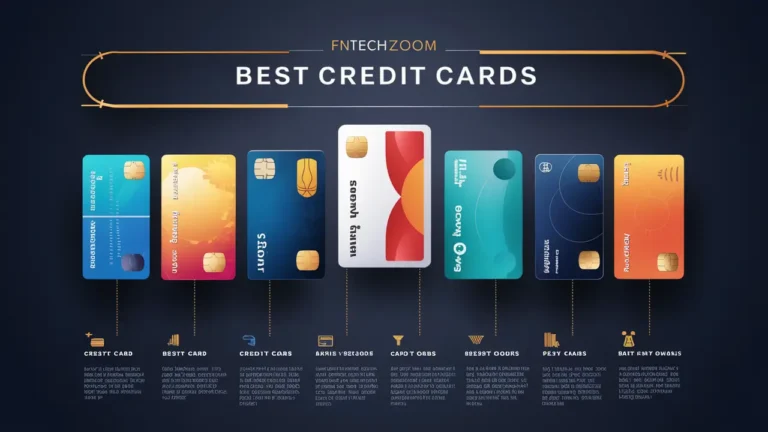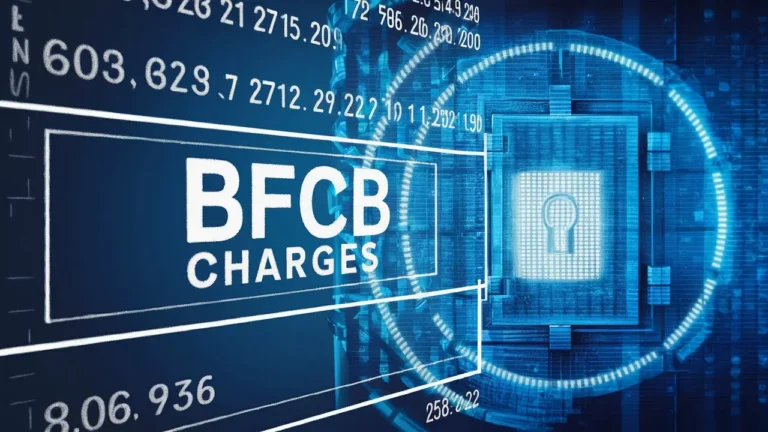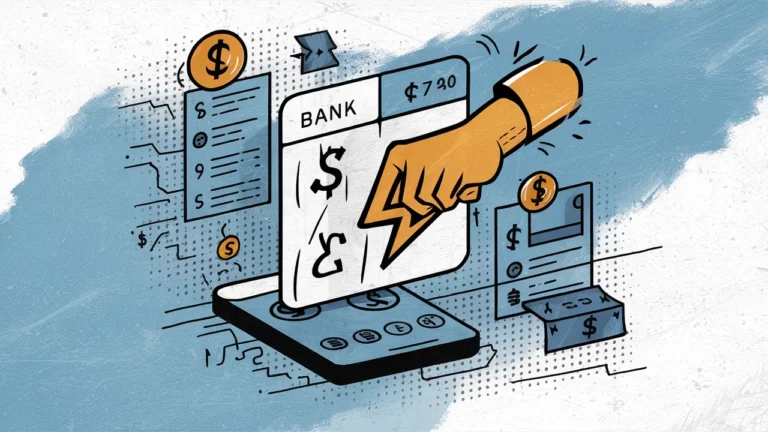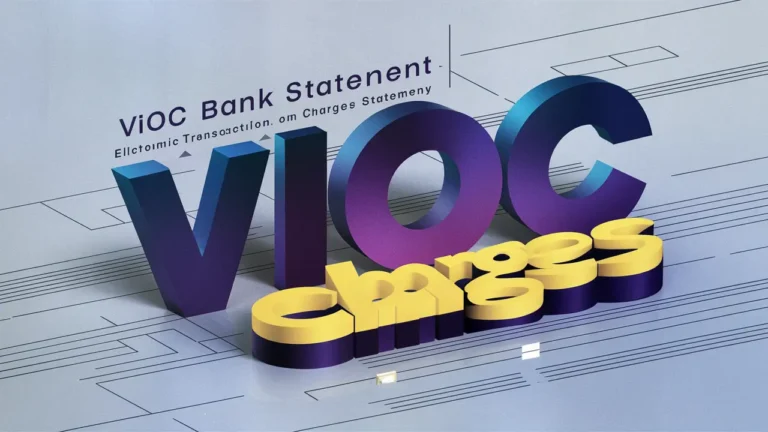Bank Statement Heloc
What is a home equity line of credit (HELOC)?
A home equity line of credit, or HELOC, is a loan backed by your home that lets you borrow money over and over again to pay for big purchases or combine high-interest debt from other loans. That is, credit cards and the like.
The interest on a home equity line of credit (HELOC) loan is usually cheaper than the interest on other types of loans, and you may be able to remove the interest from your taxes. If you want to know if you can claim interest, please talk to your tax expert. The rules may have changed.
Importance of Monitoring Bank Statements HELOC
For many reasons, keeping an eye on your bank account for your Home Equity Line of Credit (HELOC) is very important for keeping your finances safe and stable. Here’s why it’s important to keep an eye on your Bank Statement HELOC .
Following are important Point of Bank Statement HELOC
- Detecting Fraudulent Activity
- Managing Interest Charges
- Ensuring Accuracy of Transactions
- Monitoring Spending and Budgeting
- Preventing Overborrowing
- Maintaining Financial Discipline
Maintaining Financial Discipline
By keeping an eye on your Bank Statement HELOC, you can see how much interest has been added to your remaining amount. This proactive method helps you figure out how much it costs to borrow money and decide if you need to change how you pay back your debt to lower your interest costs.
Detecting Fraudulent Activity
Checking your bank statement often With HELOC, you can quickly find any purchases or activity that you didn’t authorise. If you quickly notice any strange charges or transfers, you can take instant action to stop more damage to your finances and lessen the damage that could happen.
Ensuring Accuracy of Transactions
You can make sure that the activities listed are correct by checking your Bank Statement HELOC on a daily basis. This includes making sure that payments and refunds are applied correctly, that there are no mistakes in the bills, and that the interest charges were calculated correctly. If there are any problems, you can quickly talk to your lender about them to keep your account honest.
Monitoring Spending and Budgeting
What Your Bank Says HELOC gives you information about how you spend your money and manage your money. By looking at the specifics of each transaction, you can figure out how much you spent and where you might need to make changes to your budget. Being aware of these things gives you the power to make smart financial choices and handle your resources well.
Preventing Overborrowing
Reading your Bank Statement HELOC on a regular basis will help you keep track of your current sum and total amount of debt. You can avoid overextending your funds and make sure you’re only using your HELOC for necessary costs or investments by keeping track of what you’re spending.
Maintaining Financial Discipline
Monitoring your Bank Statement HELOC on a regular basis encourages good money habits and responsibility. It supports responsible borrowing, makes sure bills are paid on time, and raises knowledge and literacy about money, all of which lead to long-term financial health and security.
How to Read Your HELOC Bank Statements
- Definition and Purpose of Bank Statements
- Relevance of Bank Statements in HELOC Management
Definition and Purpose of Bank Statements
- A bank statement for a HELOC is a regular document sent by the lender, usually once a month, that lists all the transactions and activities that happened with the HELOC account during a certain time period.
- A bank statement’s main job is to give account users a full picture of all the activity that happened with their HELOC, such as transfers, withdrawals, payments, credits, and interest charges.
- Bank bills keep track of all the money that comes in and out of a person’s account. They make both the user and the investor responsible and open. They help make sure that account management is done correctly and make it easier to keep track of loans over time.
Relevance of Bank Statements in HELOC Management
- Bank bills are an important part of managing a home equity line of credit (HELOC) because they give users important information they can use to keep an eye on and handle their spending activities.
- They help you keep track of your spending, manage your cash flow, and get a sense of your general financial health. By regularly looking over their bank records, HELOC users can learn more about how they borrow money, find ways to improve, and make smart choices about their financial goals.
- Borrowers can also use bank records to keep an eye on their amount, interest rates, and payments, making sure they are handled correctly and on time. This cautious way of managing your account can help you avoid fees, charges, or overdrafts that you don’t need, and it can also help you make better financial decisions and plans.
How can a HELOC help you?
A home equity line of credit (HELOC) may have more rules than other types of credit, but it can still be a good way to get cash to pay off other debt, help your family if you lose your job or your income goes down, or pay for a big repair or improvement.
When you use a home equity line of credit, you can get more money because the amount you can borrow depends on how much equity you have in your home.
Many credit cards don’t give you a lot of credit, so you may only be able to use them for small, low-cost projects. Also, credit card interest rates are usually four times higher than HELOC interest rates.
But if you think a credit card is better for you, you can still save money on interest by using one that has a first-time interest-free offer, like the Citi Simplicity® Card, which lets you make purchases with 0% interest for the first 12 months after opening your account (19.24% to 29.99% variable APR after that).
Also, you can borrow more money with a personal loan than with a credit card, but most lenders will only give you up to $100,000. You might look into your choices through a HELOC if you think you’ll need more money.
The interest you pay on a HELOC is tax-deductible if the money is used to pay for something related to your home. This is not the case with personal loans.
You can write off up to $1 million in mortgage interest when you file your taxes if you got the loan before December 15, 2017. If you bought a house after that date, you can deduct up to $750,000 if you are single or married and filing a joint tax return. If you are married and filing separately, you can only deduct $350,000. Remember that this only works if you use the HELOC to pay for things like a remodel or big repair that have to do with your home.
Components of a Bank Statement for HELOC
- Transaction History
- The transaction history part of your Bank Statement HELOC gives you a full record of all the transactions you’ve made with your line of credit.
- These are all the changes that were made to your HELOC account, like withdrawals, sales, trades, and any other debits or credits.
- Looking at your transaction past can help you keep track of your buying habits, spot any illegal or dishonest activity, and make sure you keep accurate records for tax reasons.
- Interest Charges
- Your Bank Statement HELOC will show you a breakdown of the interest you’ve paid on your line of credit’s remaining amount.
- The interest rate that applies and the average daily amount of your HELOC account are used to figure out how much interest you will have to pay.
- By knowing how much interest you’re charged, you can figure out how much it costs to borrow money and plan your repayments in a way that keeps your interest costs as low as possible.
- Payments and Credits
- In the payments and credits part of your Bank Statement HELOC, you can see a list of all the payments you made and credits you got during the statement period.
- Payments include the amount you pay each month, any extra capital payments, and any other amounts you make to lower your debt.
- Credits can be refunds, returns, or other changes made to your HELOC account, like interest received on credit amounts.
- Outstanding Balances
- At the end of your Bank Statement HELOC, there is a breakdown of your remaining amount. This includes the starting balance, transactions, interest charges, payments, credits, and the closing balance for the statement period.
- This part gives you a quick look at your current finances and how much you still owe on your HELOC account.
- You can keep track of your debt, get an idea of your financial health, and make good plans for future financial responsibilities by keeping an eye on your remaining amount.
Importance of Reviewing Bank Statements for HELOC

Detecting Errors and Discrepancies
- Checking your Bank Statement HELOC often is like getting your funds checked out. It helps you figure out what’s wrong with your account and fix it.
- By carefully going over each transaction, you can find any mistakes or charges that you didn’t make, keeping your account safe.
- You can avoid future financial problems and save time and money by finding and fixing these mistakes right away.
Monitoring Spending and Withdrawals
- You can see where your money is going on your Bank Statement HELOC. It keeps track of how much you spend and how much you take out, which helps you manage your money better.
- Checking your transactions can help you figure out where you’re spending too much or where you can cut back on costs that aren’t necessary.
- Now that you know this, you can change your budget and the way you spend your money to take charge of your financial future.
Managing Interest Charges and Payments
- When you have a HELOC, interest charges can add up very quickly. These fees are broken down in your Bank Statement HELOC, so you know exactly how much you’re paying to borrow money.
- You can make better plans for your payments if you know how much interest you’re adding each month. You might choose to pay more on the capital to save money on interest over time.
- Keep an eye on your payments and interest rates to stay on track with your financial goals, whether they’re to pay off debt or save for a big buy.
Strategies for Analyzing Bank Statements for HELOC

Regular Review Practices
- You should set aside time every month to carefully go over your Bank Statements Home Equity Loan. Make it a regular part of how you handle your money.
- You can set alarms or calendar reminders to remember you to check your bills as soon as they arrive.
- Reviewing your HELOC account regularly and on time will keep you up to date on what’s going on with it and allow you to quickly address any issues or concerns.
Tracking Spending Patterns
- You can use your bank statements and HELOC to see how you spend your money and spot trends over time. Find places where you might be paying too much or where you can save money.
- Sort your activities into groups to learn more about how you spend your money. This could include things like food, energy, fun things to do, and more.
- If you want to make planning easier and see more clearly how your money is being spent, you might want to use tools or apps that sync with your bank statements and HELOC.
Identifying Fraudulent Activity
- Keep a close eye on your Bank Statements HELOC for any transactions or charges that don’t seem right.
- Look for red flags like large or strange transactions, transactions from sellers you don’t know, or a lot of small charges that could mean scam.
- If you see any mistakes, you should tell your bank or provider right away so they can look into it further and keep you from losing money.
Tips for Effective HELOC Management Using Bank Statements
Setting Budget Limits
- Check your bank records. Heloc to figure out how you spend your money and find places you can save money or spend it more wisely.
- Set clear spending limits for each type of cost, like food, energy, activities, and extra money you want to spend.
- Regularly compare your spending to these budget limits using your bank records to make sure you don’t go over your spending limits and stay within your financial goals.
Automating Payments
- If your bank or loan lets you set up regular payments, use them to make sure you pay off your HELOC on time.
- You can make minimum payments or extra capital payments by setting up regular transfers from your main bank account to your HELOC account.
- By automating payments, you can escape late fees, keep a good payment past, and make managing your money easier.
Seeking Professional Advice
- Talking to a financial expert might help you figure out the best ways to handle your home equity line of credit.
- Based on your financial situation and goals, a financial advisor or mortgage expert can give you personalised advice.
- They can help you understand the terms of your HELOC, figure out the best way to pay it back, and decide if you should borrow against your home equity.
- Common Mistakes to Avoid with HELOC Bank Statements
Neglecting Regular Review
- Not checking your bank statements often enough Heloc can make it easy to miss important financial data.
- Make it a habit to look over your bills as soon as you get them to find any mistakes or deals that you didn’t make.
- Not reviewing your finances on a regular basis could mean missing mistakes, fraud, or chances to improve how you handle your money.
Misinterpreting Transaction Details
- It’s easy to get confused and waste money when you don’t understand or correctly read the details of transactions on your bank statements.
- Spend some time reading over each transaction carefully and making sure you know what it’s for and how it will affect your HELOC account.
- If you get the facts of a transaction wrong, you might make bad spending choices or forget to deal with real charges or fees.
Ignoring Interest Accruals
- You might not realise how much it costs to borrow money if you don’t look at the interest that builds up on your Bank Statements Heloc.
- Pay close attention to the interest rates that are shown on your bills and figure out how they affect your total debt.
- Ignoring interest payments could make your payback plans less effective, which would extend the time it takes to pay off your HELOC and raise the total amount of interest you pay.
Important Steps to Get a HELOC with Bank Statements
- Pick the right lender: It’s important to find lenders that offer bank statement HELOC programmes because not all of them do. It’s possible that online lenders and smaller banks are more likely to give these unique loan products.
- Get the paperwork you need. Lenders may need more than just your bank statements. For example, they may want to see your profit and loss statements, balance sheets, or a letter from your bookkeeper. Make sure you have these papers on hand to back up your application.
- Put your bank statements in order. Lenders will look at your bank statements to see how much money you make each month on average. Having your statements set up so that payments and withdrawals are easy to see will make this process go more quickly. Mark or highlight any sources of income that come in on a regular basis and explain any deals that seem odd or are very large.
- Keep your credit score high. When asking for a HELOC, no matter how you show proof, you need to have a high credit score. Pay your current bills on time, keep your credit utilisation low, and fix any mistakes on your credit report right away.
- Find your debt-to-income (DTI) ratio: The amount of your monthly gross income that goes towards paying off your debts is called your DTI ratio. If you want to get a HELOC, pay off any high-interest debt and don’t take on any new debt. This will lower your DTI ratio.
- It’s important to keep enough equity in your home. To get a HELOC, you need to have at least 20% equity in your home. You have a better chance of getting approved if you have more property.
Approval Process
If you want to get a bank statement HELOC, you should expect a full review of your finances. Bank records will be carefully looked over by lenders to confirm your income and figure out if you can afford to pay back the loan. Talk to your lender honestly about your unique financial situation and explain any changes or irregularities in your income.
While the loan is being underwritten, your lender may ask for more information or proof. Give any information that is asked for quickly to keep the process going smoothly.
Related Article
How To Hide Bank Account From Child Support






